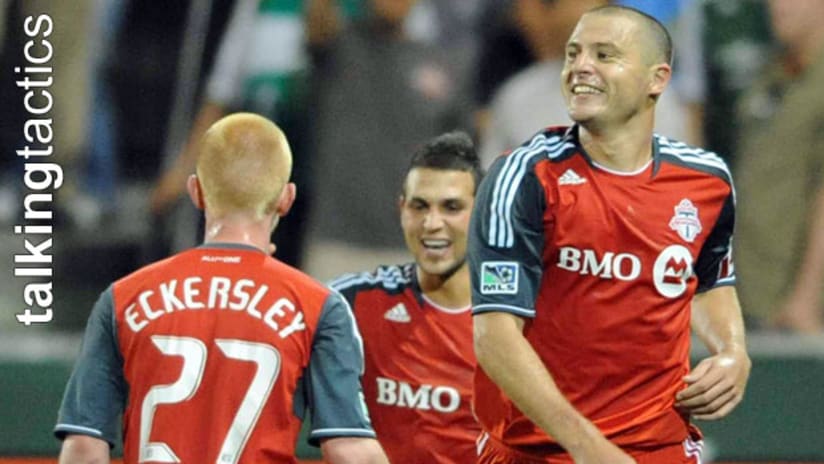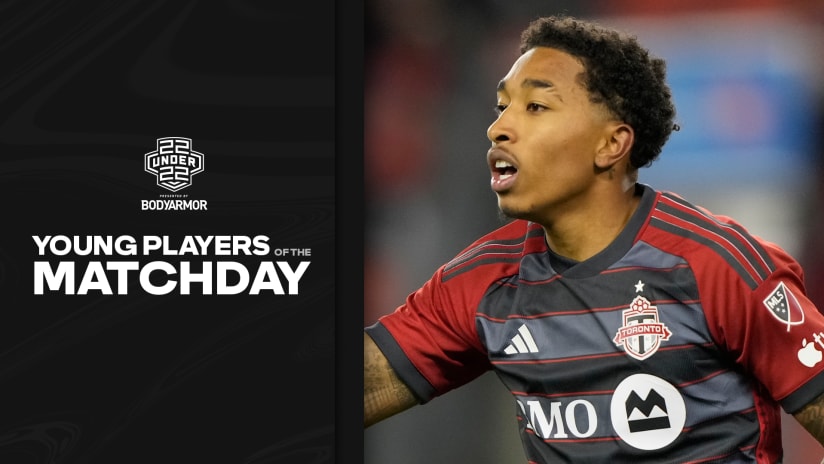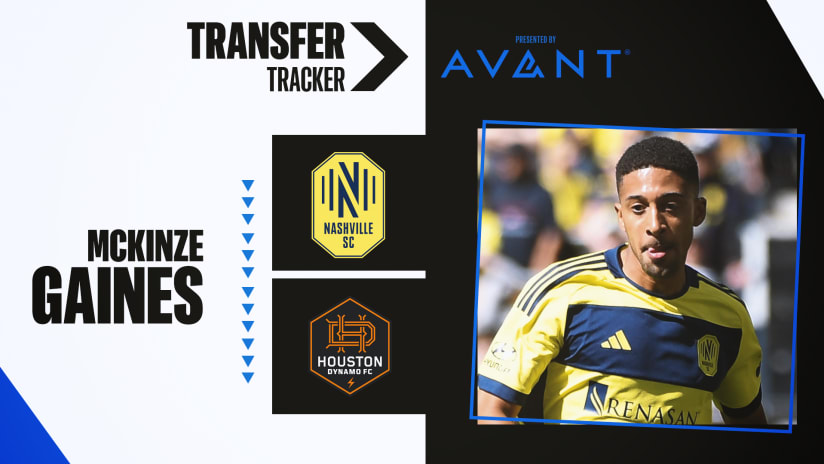What did the 4-3-3 ever do to anyone?
Suddenly, in MLS circles, going studs up into the 4-3-3 has become as common as lunch; this notion that teams can’t win in MLS in the less conventional arrangement is careening mercilessly around the media and fan echo chamber.
When we talk about the now-hated 4-3-3, of course, we’re mostly talking about the Dutch-inspired, results-challenged iteration in Toronto. Though, last week’s attempt by Hans Backe to arrange the MLS All-Stars into a 4-3-3 worked as an accelerant in the debate.
But is this notion slightly half-baked? Let’s add some context to the conversation:
At the heart of the negativity is an inductive logical argument: TFC aren’t very good. They operate in a 4-3-3. Ergo, the 4-3-3 isn’t very good.
Well, there’s a team west of BMO Field that’s similarly stuck in a ditch. It’s Vancouver, and they’ve been chained to a 4-4-2 most of the year. Should we similarly conclude that a 4-4-2 doesn’t work in MLS? Same question for San Jose, who run a 4-4-2 through and through and are struggling mightily right now, having just lost another one at home.
Now, obviously, a 4-4-2 can work in MLS; proof of tactical life exists in places like Los Angeles, Seattle, Real Salt Lake and Philadelphia, among others that line up successfully in a 4-4-2.
Here’s something else that gets conveniently lost in the 4-3-3 debate: Down in the American Midwest, Sporting Kansas City are kicking some holes in the argument. Peter Vermes’ team sets up in a 4-3-3 and SKC are doing more than OK now as they catch up with the rest of the league in home games. They are currently ranked eighth among 18 clubs in MLSsoccer.com’s Power Rankings.
And what about the MLS All-Stars and the 4-3-3 against Manchester United? David Beckham as a deep-lying playmaker in the set-up, sitting behind two bustling midfield harriers, actually worked, at least initially. For 20 or so minutes, Beckham beautifully sprayed passes around Red Bull Arena. But in the end, the problem wasn’t a 4-3-3; the problem was Manchester United.
The Red Devils, a team full of internationals in the prime of their careers, were always going to find the soft spots, wherever they happened to be. In this case, Beckham’s starting positions gradually got a little higher up the field, exposing a gap in front of the MLS back line. He’s not a defensive-minded midfielder by nature; his offensive instincts took over. And when Wayne Rooney and Dimitar Berbatov began operating in that gaping channel, possession tilted heavily in United’s direction and the visitors seized the initiative.
If you want to pick apart Backe’s choice of personnel, that’s fair game. Perhaps Shalrie Joseph and Beckham should have flip-flopped, with Joseph winning the ball initially and then interchanging with Beckham once possession was regained. As it was, Backe’s choices in tactics and personnel didn’t provide as much defensive cover as a 4-4-2, but so what? Manchester United are, well, Manchester United, and any strategy would’ve been ripe for the pickings. In the end the MLS All-Stars lost by four goals; Bruce Arena put the MLS selections in a more orthodox 4-4-2 last year and they lost by three.
(And wouldn’t we be remiss not to mention that Barcelona, currently on tour in the United States and still generally regarded as the world’s best team, operates from a remarkably fluid, weaponized 4-3-3?)
If you strip it all down to the gooey center, teams with talented personnel, with players who understand their roles and try hard, will win more than they lose. Meanwhile, teams with inferior players who are unsure about their roles and aren’t as emotionally invested, will lose. That’s about it.
As it all pertains to TFC, the side is showing hints of improvement as an evolving cast of players (quite literally) introduce themselves to each other. A 4-2 aggregate victory over Real Estelí FC in CONCACAF Champions League preliminary play saw the side through to the group stage. And a 2-2 draw Saturday in Portland (which uses a 4-4-2, by the way) is a reasonable result.
High-profile newcomers Torsten Frings and Danny Koevermans will play big roles going forward. Frings anchored the defensive midfield for Germany (in a 4-4-2, as he played behind Michael Ballack) during their third-place finish at the 2006 World Cup. He understands the position defensively but probably needs time to sort out the passing angles of the 4-3-3.
Koevermans plays a huge role, too, as the 4-3-3 demands a rugged, mobile target forward; TFC had been without such a specialist before the Dutch striker’s arrival.
But here’s the only thing you need to know about Toronto: Individual performances are carrying the team right now. 19-year-old Joao Plata, the diminutive, versatile attacker from Ecuador, hit both goals over Estelí in last week’s first leg, and involved in both goals during the satisfying draw at JELD-WEN Field. Recently acquired Ryan Johnson struck two in the second leg against Estelí on Tuesday. If Plata and Johnson (and the suddenly perky Peri Marosevic) keep it up, TFC will win a few and probably quash some of this talk over faulty tactics.
Because in the end, every formation requires a bit of talent to make it work.














